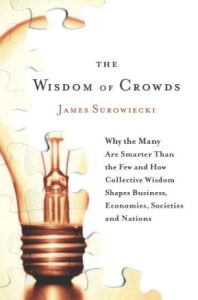Join getAbstract to access the summary!

Join getAbstract to access the summary!
James Surowiecki
The Wisdom of Crowds
Why the Many Are Smarter Than the Few and How Collective Wisdom Shapes Business, Economies, Societies and Nations
Doubleday Broadway, 2004
What's inside?
Much of the time, an amateur crowd can outguess an expert on cognition, coordination and cooperation queries. How?
Recommendation
This well-written bestseller explores the apparent anomaly that crowds of nonexperts seem to be collectively smarter than individual experts or even small groups of experts. This basic insight is at the heart of contemporary financial investment theory, with its emphasis on the difficulty of outguessing the market. Beginning with British scientist Francis Galton’s remarkable discovery in 1906 that a crowd of nonexperts proved surprisingly competent at guessing the weight of an ox, financial columnist and author James Surowiecki skillfully recounts experiments, discoveries and anecdotes that demonstrate productive group thinking. The concept does not come as news to anyone reasonably well read in modern financial literature, but getAbstract recommends this comprehensive, fresh presentation.
Summary
About the Author
James Surowiecki is a staff writer at The New Yorker, which publishes his popular business column, "The Financial Page."




















Comment on this summary